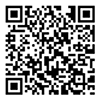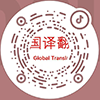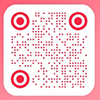Specific Solutions
Translating User Manuals into English
With the internationalization of products, user manuals have become a key document connecting companies with overseas customers. Translating a user manual into English requires not only linguistic accuracy but also clear presentation of operating instructions, technical specifications, and safety warnings. High-quality translation can enhance user experience, reduce operational errors, and establish a professional brand image.
1. The Importance of Translation
User manuals typically include operating procedures, installation guides, maintenance instructions, and safety precautions. When translating into English, it is essential to ensure that information is accurate and easily understood to avoid misunderstandings or operational mistakes. For companies, a high-quality manual translation can:
Improve the user experience for international customers
Reduce the risk of misuse or safety incidents
Build a professional and trustworthy brand image
2. Translation Process
Content Analysis
Conduct a comprehensive review of the manual to identify technical terms, step-by-step instructions, and diagrams.Terminology Standardization
Develop a glossary to ensure consistency for product names, feature descriptions, units, and safety warnings.Translation and Proofreading
A translator with product and industry expertise completes the first draft, followed by proofreading to check language accuracy, logical clarity, and technical correctness.Charts and Formatting
Manuals often contain diagrams, tables, and flowcharts. During translation, English text should be adjusted to maintain the layout and consistency with the original document.Final Review
Conduct a complete review to ensure the English manual is fluent, complete, clear, and conforms to international user reading habits.
3. Key Considerations
Clarity and Conciseness: Instructions should be simple and easy to understand, avoiding lengthy or complex sentences.
Fidelity to the Original: Accurately convey every step and safety instruction.
Consistency: Maintain uniformity for product names, button labels, and interface terms.
Cultural Adaptation: Consider the reading habits and safety norms of overseas users, using appropriate language.
Notes and Annotations: Retain original terminology or add annotations where necessary to aid user comprehension.
4. Conclusion
Translating user manuals into English is not merely a language conversion—it is a crucial tool to enhance product competitiveness and customer satisfaction. Engaging a professional translation team and following a systematic workflow ensures that English manuals are accurate, clear, and user-friendly, providing strong support for international product promotion.


















